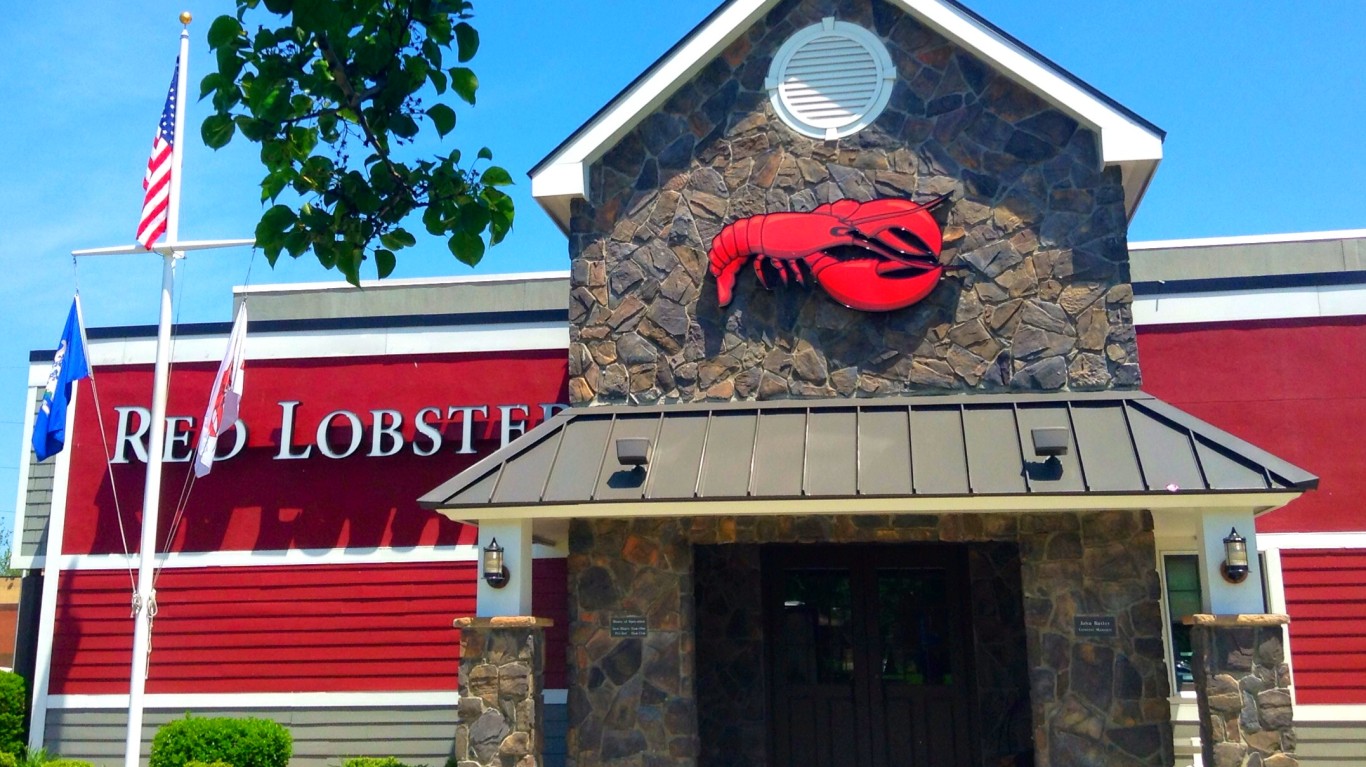Investing
Is Red Lobster's Bankruptcy the End for This Beloved Chain?

Published:
Last Updated:

A report from Bloomberg today says that Red Lobster has engaged with a law firm as it decides whether to declare bankruptcy. With 649 locations spread throughout the United States, Red Lobster is one of the country’s more well-known sit-down chains.
And yet, today it’s struggling under many difficulties including onerous leases, rising labor costs, and promotions like its Endless Shrimp promotion that led to significant losses. Let’s look at the details of Red Lobster’s potential bankruptcy and whether the brand can make a rebound.

Like many sit-down chains, Red Lobster has gone through being owned by a series of conglomerates and private equity. Until 2014 the company was owned by Darden Restaurants (NYSE: DRI), which owns brands like Olive Garden, Longhorn Steakhouse, Yard House, Ruth’s Chris, Seasons 52, The Capital Grill, and Bahama Breeze.
At that point, Red Lobster was sold to investment firm Golden Gate Capital, which majority-owned Red Lobster until it was sold to a group led by Thai Union Group. The acquisition by Thai Union group was a little puzzling.
Thai Union is primarily a seafood supplier to areas like canned tuna, fish pates, pet food, and plant-based seafood. So a shift in the restaurant business risked becoming a distraction for the company.
As you can imagine, Red Lobster’s marriage with Thai Union didn’t last long. In Thai Union’s recent investment letter, they make little reference to Red Lobster aside from noting the seafood restaurant is “attributable for most its losses” and that it plans to fully exit its investment in the company.
In the fourth quarter, Thai Union reported Red Lobster recorded a $12.5 million loss after losing $11 million the prior quarter. One pain point throughout the year was an Endless Shrimp promotion. Despite raising prices repeatedly, diners managed to get more than their money’s worth and the deal continued racking up losses.
Never bet against the American eater.

With Thai Union looking to exit Red Lobster, it’s not surprising that bankruptcy is a likely outcome for the company. After all, with the chain losing large sums of money recently, it’s not an attractive acquisition without shedding costs.
The writing seemed to be on the wall last month when Red Lobster appointed a managing director from a restructuring firm as its new CEO, and today’s news just seems to confirm Red Lobster’s drive toward Chapter 11.
Bankruptcy gives one way for Red Lobster to rebuild its cost structure. A filing of Chapter 11 bankruptcy will allow the company to restructure its debt and give it more options in renegotiating leases.
While Red Lobster has stumbled in recent years, it’s still a popular brand across America. Surveys from YouGov ranked it as the 23rd most popular restaurant brand among Baby Boomers. The restaurant is less popular among Millennials (46th), which adds to its woes.
The likely outcome from Red Lobster’s restructuring isn’t that the chain will go away. Instead, restructuring will allow the company to close underperforming restaurants. So, if you’re a fan of Red Lobster and fear the chain disappearing, there’s likely nothing to fear in the short term.
However, if your local location closes, you might have to drive a little further (and pay a little more) to get your fill of the next Lobsterfest.
Are you ready for retirement? Planning for retirement can be overwhelming, that’s why it could be a good idea to speak to a fiduciary financial advisor about your goals today.
Start by taking this retirement quiz right here from SmartAsset that will match you with up to 3 financial advisors that serve your area and beyond in 5 minutes. Smart Asset is now matching over 50,000 people a month.
Click here now to get started.
Thank you for reading! Have some feedback for us?
Contact the 24/7 Wall St. editorial team.